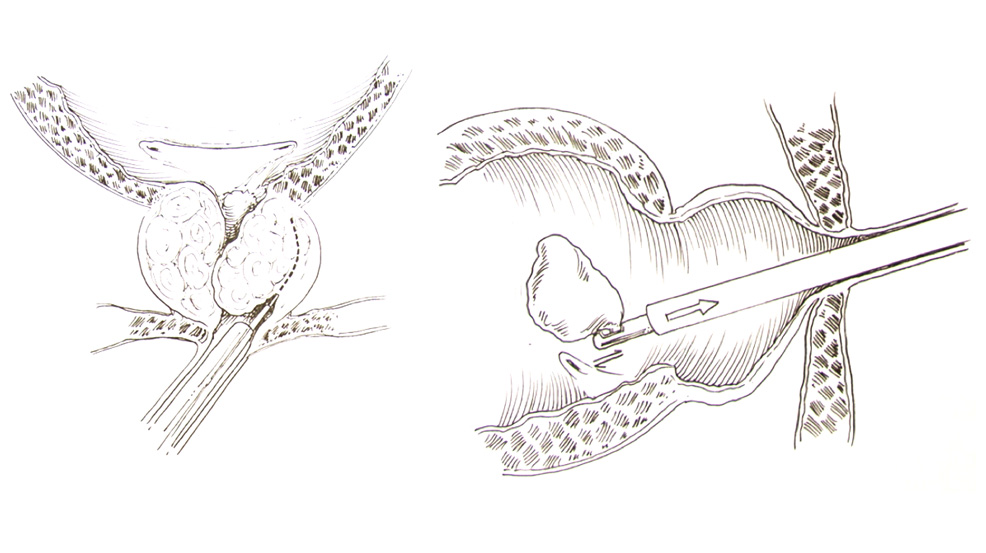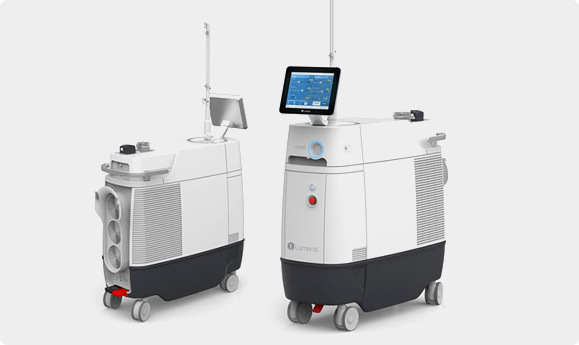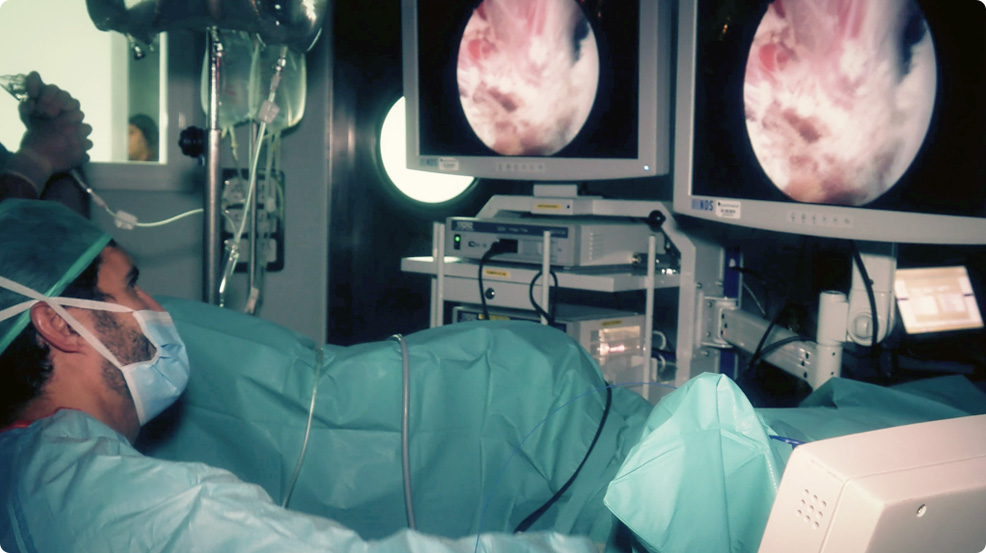Holmium Laser
Enucleation with Holmium laser
Holmium Laser has a high cutting capacity and high hemostasis or coagulation capacity due to the characteristics of the wavelength. This makes it an ideal tool to enucleate prostate tissue.
Enucleation with Holmium Laser does not vaporise tissue, but reproduces what open surgery does: it is capable of removing all the hyperplastic tissue or adenoma which obstructs the urethra by completely removing it, but with the enormous advantage of doing it through the urethra.
It is the only technique that can compare its functional results with open surgery, but with the benefits of less invasive surgery:
- No injury
- Minimal bleeding
- Exceptional blood transfusion.
- Shorter catheterisation time, about 36-48 hours.
- Shorter hospital stay with an average of 36-48 hours.
- Faster incorporation into regular activities.
- Suitable for all prostate sizes (Green Light Laser only for prostates smaller than 60-80 cc).
- Removes all adenomatous tissue (Green Light Laser only removes some).
- Obtains the best functional results.
- Its benefit is usually lasts a lifetime.
- Tissue remains for histopathological analysis.
- Bladder stones, bladder tumours, urethral stenosis, and concomitant pathologies that are previously known or may be found incidentally at the time of the operation can be treated at the same time.


Holmium Laser has been employed for over 15 years. Our working group already has 12 years of experience and more than 2,500 operations with this procedure.
The European Association of Urology Guidelines on Good Clinical Practice are created by renowned experts in the field that review articles with a scientific basis and the best evidence-based medicine for each topic. The guidelines specify that enucleation with Holmium Laser is suitable for all prostate sizes, and achieves the best functional results with minimum morbidity.
They also specify that for prostate sizes over 80 grams only open surgery or Holmium Laser enucleation should be performed. Photovaporisation lasers, such as green light laser, are not recommended.
None. Holmium Laser enucleation is very versatile and, as mentioned, it can be applied to all prostate sizes. We have performed operations on patients with prostate glands between 40 and 300 grams.
In addition, due to the aforementioned advantages, it is especially indicated for risk patients: elderly persons, people with heart disease, anticoagulated patients and, in general, patients with concomitant pathologies that increase the risk when being operated with other procedures.
It is true that the problem with this technique is the learning curve. It requires much more experience than with other lasers.
As mentioned, our experience already exceeds 2,500 patients operated with this technique, and we are accredited by Lumenis, the company that markets the Holmium Laser, as instructors for other specialists who want to be introduced to this technique.

